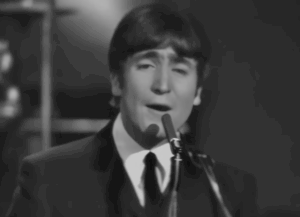6 Most Unfaithful Classic Rock Covers of Other Artists

via Ike & Tina Turner - Topic / YouTube
Music is a universal language that speaks to hearts and transcends boundaries, telling stories and evoking emotions in unique ways. Particularly interesting are classic rock bands and artists who have stepped out of their comfort zones to put their spin on songs from other genres. While these covers can be thrilling, showcasing the versatility and creativity of the artists, there are times when the renditions take such a wild turn that they barely resemble the original tracks. This list dives into some of the most notable, if not radically different, classic rock covers of songs from various musical landscapes, revealing how artists can take a familiar tune and morph it into something entirely their own.
1. “Live and Let Die” by Guns N’ Roses (Originally by Paul McCartney and Wings)
“Live and Let Die,” initially crafted by Paul McCartney and Wings for a suave spy film, morphs into a vehement classic rock spectacle in the hands of Guns N’ Roses. The original’s orchestral grandeur and enigmatic shifts gave way to Axl Rose’s hard rock ferocity, transforming a sleek soundtrack piece into an incendiary concert powerhouse. The roar of electric guitars and the resounding crash of drums serve as testament that a crossover cover can magnify the intensity of a song while remolding its character entirely.
2. “Proud Mary” by Ike & Tina Turner (Originally by Creedence Clearwater Revival)
Creedence Clearwater Revival’s “Proud Mary” rolls down the river with a smooth rock rhythm and John Fogerty’s clear-cut vocals. When Ike & Tina Turner got a hold of it, they sent “Proud Mary” spinning with a soulful twist. The Turner version kicks off serenely, echoing the original’s vibe before bursting into a vibrant, high-energy showpiece. Tina Turner’s powerful voice sets the stage for a performance filled with soul, punch, and a flare that’s become iconic in its own right—truly a departure from the song’s rock roots.
3. “Knockin’ on Heaven’s Door” by Guns N’ Roses (Originally by Bob Dylan)
“Knockin’ on Heaven’s Door,” with its contemplative simplicity, marked Bob Dylan’s repertoire with its themes of life and its looming end. Then along came Guns N’ Roses, whose cover electrifies Dylan’s tranquil acoustic backdrop with a straightforward rock beat and wailing lead guitar solos. The raw power of Axl Rose’s vocals casts the song’s narrative in a strikingly different light, showing how a rock band can imbue an already potent song with added layers of emotion and energy.
4. “I Fought the Law” by The Clash (Originally by The Bobby Fuller Four)
A tune that was once firmly rooted in the rock framework, “I Fought the Law” by The Bobby Fuller Four had a certain sunniness despite its narrative of rebellion. The Clash, emblematic of punk’s raw spirit, grabbed the song and turned up the attitude. The pace quickens, the guitars gain a crunch, and a tone of dissent rises much clearer, transforming the catchy number into a punk rock rallying cry. This overhaul illustrates the adaptability of music, and how a handful of changes can shift a tune’s impact and intention.
5. “Hound Dog” by Elvis Presley (Originally by Big Mama Thornton)
Big Mama Thornton originally belted out “Hound Dog” as an R&B number brimming with soul and a bluesy beat. However, when Elvis Presley swiveled his hips to his rendition of the song, it took on a completely new shape. The King of Rock ‘n’ Roll infused the track with his distinctive vocal style and energy, which, combined with buoyant instrumentals, created a rock and roll staple. Elvis’s cover of “Hound Dog” is one of those pivotal moments in music history where an artist takes a song and redefines it for a whole new audience, simultaneously paying homage to and diverging from the source material.
6. “American Woman” by Lenny Kravitz (Originally by The Guess Who)
In its original form, The Guess Who’s “American Woman” was laced with blues rock elements and served as a critique of societal and political issues in the United States. Enter Lenny Kravitz, whose modern interpretation amps up the rock factor, weaving in a thread of gritty guitar licks and a groove-driven bass line. Kravitz’s cover hones the edge of the message while polishing the production, giving the song a sleek finish that suits the change in eras. It’s a display of how a rock musician can update a classic while still preserving its rebellious soul.



















